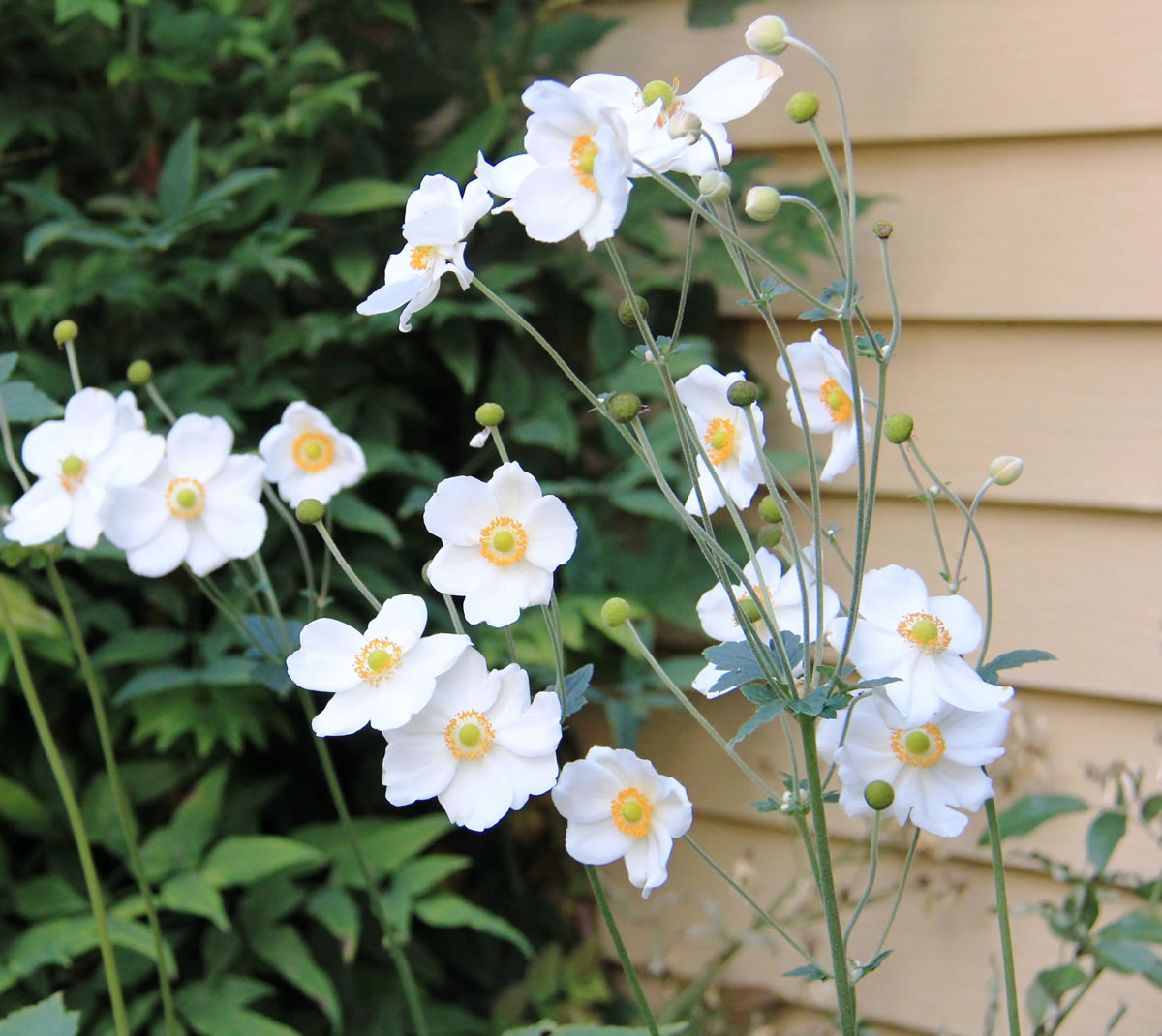October brings with it the change of seasons from summer to autumn. More often than not the days remain quite pleasant with warm afternoons that seem to be an extension of summer. For those of us with a penchant for seasonal flowering plants, many shrubs and vines that flowered earlier in the year might surprise us with a second flowering. Roses, fuchsia and many cultivars of clematis will welcome in the new season with flush of intermittent blossoms.
Japanese anemones are in full flower now. Like their fellow late-season compatriots, the rudbeckias and echinaceas, they continue through the autumn season and often meet the arrival of the winter months while still in bloom. The Japanese anemones, however, add a distinct note of grace and charm to the end of season borders. Although I rely on large sweeps of black-eyed, yellow flowers such as Rudbeckia hirta and R. fulgida “Goldsturm” to enliven my borders with strong color, the anemone hybrids are indispensable for melding all the varied colors of fall together.
The fall-flowering anemones come in a wide range of similar colors. They bloom as single or semi double flowers in shades of white, silvery pink or rose and there are many named varieties. If you see one in a garden that you like, ask the gardener if they know the name or can show you the plant tag. Japanese anemones are listed in plant encyclopedias as Anemone x hybrida, A. japonica and sometimes, A. hupehensis japonica.
I make this notation because there are many different forms of garden anemones and most of them have their flowering season in early to midspring. The forms listed above all flower in late summer and into fall. By knowing the exact name of the plant you want for your garden, you can be sure to buy the distinct plant you have in mind. I know I’m speaking to every gardener when I refer to the disappointment of planting a coveted flower only to have it come up as something different than what we had hoped it would be.
Since we typically buy autumn flowering plants from a nursery in the fall, we have this opportunity to choose a specific variety for its distinct attributes. As long as you know exactly what plant you want, consider buying perennial flowers that are past their season of bloom. These are often marked down as much as 50 percent from their original price. They won’t display flowers the first year but they will come back in subsequent years just like their floriferous counterparts bought earlier in the season.
In the early years of my current garden I was always planting groups of vibrant chrysanthemums. I surely bought a hundred or more. They always caught my eye as they sat on nursery shelves, just waiting for me to take them home and plant them. I’m amazed at how few of them have survived. As they faded from my garden, typically failing to return after a winter of any substance, I began replacing them with hardy asters and I have to admit, my autumn garden is better for it.
Asters come in a wide variety of colors but they always seem to harmonize together well. Somehow, in the mix of purples, reds, pinks and blues set off by a typically yellow center, there are seldom clashes of color. I love the lavender blue flowers of Aster x frikartii “Monch” and “Wonder of Staffa.” They combine perfectly with the purplish pink Anemone x “Hadspen Abundance.” In my experience, asters are reliable late-season perennials that weather winter storms and come back stronger every year.
Autumn is one of the best times of year to add new plants to existing beds and borders. A border with all-year interest will contain a mix of trees, shrubs, vines and perennials. At this time of year, we can count on autumn rain to water new plantings, while the warm soil and cool air insure ideal conditions for planting and transplanting. As long as you are prepared to protect young plants from unexpected freezes you can also plant out needle and broadleaf evergreens in the fall.
Part of the gardening experience in the Pacific Northwest is planting our gardens to reflect the distinct seasons of the year. In anticipation of the changing fall garden we plant deciduous trees and shrubs that are known for their burnished autumn foliage. We also plant seasonal perennials that bloom in hues of muted purple, pink, and gold. Purple Cone flower (Echinacia purpurea spp.), Black-eyed Susan (Rudbeckia spp.) and Aster frikartii “Monch” mirror the colors of the late season sky.
Robb Rosser is a WSU-certified master gardener. Reach him at Write2Robb@aol.com.



